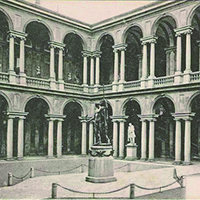COMMUNICATION IN AND AROUND MESMERISM. CONTROVERSIES, CASE HISTORIES AND THE CULTURAL IMAGINATION
 Smart Citations
Smart CitationsSee how this article has been cited at scite.ai
scite shows how a scientific paper has been cited by providing the context of the citation, a classification describing whether it supports, mentions, or contrasts the cited claim, and a label indicating in which section the citation was made.
Mesmerism or animal magnetism was the most controversial and most spectacular medical concept of the late eighteenth- and early nineteenth-century. It was also conceptualised and practiced as a medical therapy based entirely on communication; a communication that worked on many levels: between magnetiser and patient, between body and mind and – in its theoretical explanations – between human beings and the cosmos. This paper will first briefly look at theories of mesmerism from this perspective and then discuss some of the scandalous and provocative communicative phenomena of the so-called magnetic rapport between magnetiser and patient in the somnambulist trance. It will also briefly review the controversies between supporters and sceptics of the magnetic cure around the communicative experience in the rapport. The final part of this paper will turn to Romantic literature, as its rich aesthetic representations of mesmerism transcend enlightenment controversies and offer more complex, nuanced and insightful negotiations of the forms of communication prevalent and observable in the mesmerist phenomena. In mesmerism we can thus observe that around 1800 literature seems to know and understand more about psychodynamic and psychophysical communication than medical science.


 https://doi.org/10.4081/incontri.2021.724
https://doi.org/10.4081/incontri.2021.724

